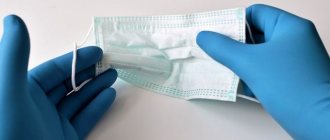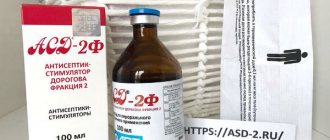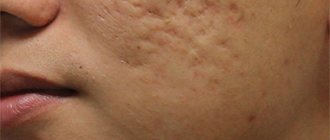Epstein-Barr virus (EBV), also called human herpes virus type 4, is one of eight known herpes viruses. This virus is found in saliva and is the direct cause of the development of infectious mononucleosis, characterized by fever, damage to the throat, spleen and liver. In addition, the Epstein-Barr virus is associated with the development of many autoimmune diseases. Read further in the article on how you can suppress this virus and keep it in check.
The article is based on the findings of 73 scientific studies
The article quotes the authors:
- Harvard Medical School, USA
- Department of Pharmacology, Vanderbilt University School of Medicine, USA
- Department of Microbiology and Immunology, University of British Columbia, Canada
- School of Medicine, University of Queensland, Australia
- Department of Psychology, University of Miami, USA
- and other authors.
Please note that the numbers in parentheses (1, 2, 3, etc.) are clickable links to peer-reviewed scientific studies. You can follow these links and read the original source of information for the article.
Many people have the virus in their body, although most will never develop mononucleosis or any unwanted symptoms. EBV is considered a common virus in most developed countries, affecting 90-95% of people under 20 years of age. ()
Like some other viruses, such as herpes simplex virus, Epstein-Barr virus can remain dormant throughout life. Even if someone does not show any symptoms, they are still capable of spreading the infection. Often, the presence of the virus in the body is manifested by some minor symptoms such as extreme fatigue, weakness and fever.
Epstein-Barr virus
Epstein-Barr virus was discovered in 1964 by M. Epstein and Y. Barr. Belongs to the family of herpes viruses (it is a herpes virus type 4), the subfamily of gamma viruses, and the genus of lymphocryptoviruses. The pathogen contains 3 antigens: nuclear (EBNA), capsid (VCA) and early (EA). The viral particle consists of a nucleotide (contains double-stranded DNA), a capsid (consists of protein subunits) and a lipid-containing envelope.
Viruses target B lymphocytes. In these cells, pathogens are able to remain for a long time and, with a decrease in the functioning of the immune system, become the cause of the development of chronic Epstein-Barr virus infection, a number of severe oncological pathologies of a lymphoproliferative nature, autoimmune diseases and chronic fatigue syndrome.
As viruses multiply, they activate the division of B lymphocytes and are transmitted to their daughter cells. Mononuclear cells—atypical lymphocytes—appear in the patient’s blood.
Pathogens, thanks to a large set of genes, are able to evade the human immune system. And their greater ability to mutate allows viruses to avoid the effects of antibodies (immunoglobulins) developed before mutation. All this causes the development of secondary immunodeficiency in those infected.
Specific antigens of the Epstein-Barr virus (capsid, nuclear, membrane) are formed sequentially and induce (promote) the synthesis of corresponding antibodies. Antibodies in the patient’s body are produced in the same sequence, which makes it possible not only to diagnose the disease, but also to determine the duration of infection.
Rice. 2. The photo shows two Epstein-Barr viruses under a microscope. The genetic information of virions is enclosed in a capsid - a protein shell. The outside of the virions is loosely surrounded by a membrane. The capsid core and membrane of viral particles have antigenic properties, which provides pathogens with high damaging ability.
Epidemiology of Epstein-Barr virus infection
The disease is slightly contagious (lowly contagious). Viruses infect both adults and children. Most often, EBVI occurs asymptomatically or in the form of acute respiratory infections. Children in the first 2 years of life are infected in 60% of cases. The proportion of people who have antibodies to viruses in their blood among adolescents is 50 - 90% in different countries, among adults - 95%.
Epidemic outbreaks of the disease occur once every 5 years. The disease is more often registered in children aged 1 - 5 years living in organized groups.
Source of infection
The Epstein-Barr virus enters the human body from patients with clinically pronounced and asymptomatic forms of the disease. Patients who have suffered an acute form of the disease remain dangerous to others for 1 to 18 months.
Pathways of pathogen transmission
The Epstein-Barr virus is spread by airborne droplets (with saliva), household contact (through household items, toys, oral sex, kissing and shaking hands), parenteral (through blood transfusion), sexual and vertical (from mother to fetus).
Entrance gate
The entry gate for the pathogen is the mucous membrane of the upper respiratory tract. Organs rich in lymphoid tissue - tonsils, spleen and liver - are primarily affected.
Rice. 3. Epstein-Barr virus is transmitted through saliva. The disease is often called the “kissing disease.”
Causes of infection
The main sources of infection may be:
- a patient who exhibits an acute clinical form. It becomes most dangerous in: the final days of the incubation period, the first days of the development of the disease, the very peak of the development of the virus, the convalescence period;
- a carrier of a virus with a latent (latent) form of the disease.
Infection can be transmitted in several ways:
- Aerogenic (airborne). Infection occurs when saliva or mucus from the oropharynx, released during coughing, sneezing, talking, kissing, comes into contact with the skin.
- Contact (contact-household). The virus can be transmitted through: dishes, toys, personal hygiene products.
- Transfusion. Infection occurs if blood is transfused with an infection.
- Nutritional. The disease occurs when drinking contaminated water and food.
- Transplantental. It is also called vertical. The child becomes infected before birth.
The above listed routes show possible situations in which infection occurs, but with a high level of immune protection this does not happen. The deterioration of the protective function of the immune system is facilitated by:
- bacterial or viral infections;
- stressful conditions;
- temperature changes from critically low to abnormally high;
- exacerbation of vitamin deficiencies;
- manifestations of hypovitaminosis;
- long exposure to sunlight;
- getting damaged;
- exhaustion due to various diets.
How does the disease develop in adults and children?
Epstein-Barr virus most often enters the upper respiratory tract through airborne droplets. Under the influence of infectious agents, epithelial cells of the mucous membrane of the nose, mouth and pharynx are destroyed and pathogens penetrate in large quantities into the surrounding lymphoid tissue and salivary glands. Having penetrated B-lymphocytes, the pathogens spread throughout the body, primarily affecting the lymphoid organs - tonsils, liver and spleen.
In the acute stage of the disease, viruses infect one out of every thousand B-lymphocytes, where they multiply intensively and potentiate their division. When B lymphocytes divide, viruses are transmitted to their daughter cells. By integrating into the genome of infected cells, viral particles cause chromosomal abnormalities in them.
Some of the infected B-lymphocytes are destroyed as a result of the multiplication of viral particles in the acute phase of the disease. But if there are few viral particles, then B-lymphocytes do not die so quickly, and the pathogens themselves, persisting for a long time in the body, gradually infect other blood cells: T-lymphocytes, macrophages, NK cells, neutrophils and vascular epithelium, which leads to the development secondary immunodeficiency.
Pathogens can reside in the epithelial cells of the nasopharyngeal region and salivary glands for a long time. Infected cells remain in the crypts of the tonsils for quite a long time (from 12 to 18 months), and when they are destroyed, viruses are constantly released into the external environment with saliva.
The pathogens persist (stay) in the human body for life and subsequently, with a decrease in the functioning of the immune system and hereditary predisposition, become the cause of the development of chronic Epstein-Barr virus infection and a number of severe oncological pathologies of a lymphoproliferative nature, autoimmune diseases and chronic fatigue syndrome.
In HIV-infected people, EBVI manifests itself at any age.
In children and adults infected with Epstein-Barr viruses, pathological processes rarely develop, since the body's normal immune system is in most cases able to control and counteract the infection. Active reproduction of pathogens is caused by an acute bacterial or viral infection, vaccination, stress - everything that attacks the immune system.
Rice. 4. Epstein-Barr virus under a microscope.
Prevention of complications
It is almost impossible to avoid infection with the Epstein-Barr virus. There is no need to worry about this either: adults almost always already manage to become infected with it and develop immunity.
You should not try too hard to protect a child with a normal immune system from infection with the virus. Moreover: the sooner a child gets sick with mononucleosis, the weaker the disease will develop. Perhaps the baby won’t even notice it. And his immunity will remain with him for life.
For those who suffer from immunodeficiencies, a special vaccine is being developed today, which, according to its creators, will protect the body from infection with the Epstein-Barr virus. This vaccine will also be aimed at children living in third world countries in whom the virus causes the development of lymphomas.
In other cases, reliable prevention of diseases caused by the Epstein-Barr virus will be systematic and diligent strengthening of the immune system. This is especially true for children of any age. Measures to prevent the development of such diseases must include:
- Hardening, starting from infancy, when the child is taught to bathe in water at room temperature and stay in the fresh air, and systemic cold water therapy throughout life;
- Vitamin support for the body, which consists of proper planning of the diet, an abundance of fresh fruits, vegetables and berries in it, as well as taking specialized multivitamin complexes;
- Quick and effective fight against any somatic diseases (they weaken the immune system);
- Avoidance of stress, both physical and psychological;
- Lots of movement, especially in the fresh air.
All these measures will increase the body’s resistance and chances of surviving infection with the Epstein-Barr virus with minimal consequences.
Acute form of Epstein-Barr virus infection in adults and children
Acute primary infection caused by Epstein-Barr viruses or mononucleosis-like syndrome (not to be confused with infectious mononucleosis) in adults and children begins with high fever, sore throat and enlarged posterior cervical lymph nodes. The anterior cervical and ulnar lymph nodes are somewhat less likely to enlarge. There are cases of generalized lymphadenopathy. In half of the patients the spleen is enlarged, in 10 - 30% of patients there is an enlargement of the liver. Some patients develop periorbital edema.
The incubation period for EBVI lasts 4 - 7 days. All symptoms are most pronounced on average by the 10th day of illness.
Symptoms of acute form of EBVI
Intoxication syndrome
Most cases of the disease begin acutely with high body temperature. Weakness, lethargy, malaise and loss of appetite are the main symptoms of EBVI during this period. Initially, the body temperature is subfebrile. After 2 - 4 days it rises to 39 - 400C.
Generalized lymphadenopathy
Generalized lymphadenopathy is a pathogonic symptom of EBVI in adults and children. It appears from the first days of the disease. 5-6 groups of lymph nodes enlarge simultaneously: more often the posterior cervical ones, somewhat less frequently - the anterior cervical, submandibular and ulnar ones. In diameter from 1 to 3 cm, not soldered together, arranged either in chains or in packages. They are clearly visible when you turn your head. Sometimes pasty tissue is observed above them.
Rice. 5. Most often, with EBVI, the posterior cervical lymph nodes are enlarged. They are clearly visible when you turn your head.
Symptoms of tonsillitis in acute form of EBVI
Tonsillitis is the most common and early symptom of the disease in adults and children. Tonsils enlarge to II - III degree. Their surface becomes smoothed due to infiltration and lymphostasis with islands of dirty gray deposits, sometimes resembling lace, as in diphtheria, they are easily removed with a spatula, do not sink in water, and are easily rubbed. Sometimes plaques become fibrous-necrotic in nature and spread beyond the tonsils. Signs and symptoms of tonsillitis due to Epstein-Barr virus infection disappear after 5 to 10 days.
Rice. 6. Sore throat with EBVI. When plaque spreads beyond the tonsils, differential diagnosis should be made with diphtheria (photo on the right).
Symptoms of adenoiditis in acute form of EBVI
Adenoiditis in the disease is often recorded. Nasal congestion, difficulty breathing through the nose, snoring while sleeping with your mouth open are the main symptoms of Epstein-Barr virus infection in adults and children. The patient's face becomes puffy (takes on an “adenoid” appearance), the lips are dry, the eyelids and bridge of the nose are pasty.
Enlarged liver and spleen
When the disease occurs in children and adults, the liver enlarges already at the beginning of the disease, but most often in the 2nd week. Its size returns to normal within 6 months. Hepatitis develops in 15–20% of patients.
An enlarged spleen in adults and children is a later symptom of the disease. Its size returns to normal in 1 to 3 weeks.
Rash
Exanthema (rash) appears on days 4–14 of the disease. It's varied. It can be spotted, papular, roseolous, pinpoint or hemorrhagic, without a specific localization. Observed for 4 - 10 days. Often leaves behind pigmentation. The rash appears especially often in children receiving amoxicillin or ampicillin.
Hematological changes
In the acute form of EBVI, leukocytosis, neutropenia, lymphocytosis, and monocytosis are observed. Mononuclear cells appear in the blood in quantities from 10 to 50 - 80%. Mononuclear cells appear on the 7th day of illness and persist for 1 - 3 weeks. ESR rises to 20 - 30 mm/hour.
Rice. 7. Rash in children with Epstein-Barr virus infection.
Outcomes of acute form of EBVI in adults and children
There are several options for the outcome of the acute form of Epstein-Barr virus infection:
- Recovery.
- Asymptomatic virus carriers.
- Chronic recurrent infection.
- Development of cancer.
- Development of autoimmune diseases.
- The emergence of chronic fatigue syndrome.
Disease prognosis
The prognosis of the disease is influenced by a number of factors:
- Degree of immune dysfunction.
- Genetic predisposition to Epstein-Barr virus-associated diseases.
- Acute bacterial or viral infection, vaccination, stress, surgery—anything that attacks the immune system—causes the active proliferation of pathogens.
Rice. 8. The photo shows infectious mononucleosis in adults. Enlarged lymph nodes are an important sign of the disease.
Infectious mononucleosis is a dangerous disease. At the first signs and symptoms of the disease, you should immediately consult a doctor.
Chronic Epstein-Barr virus infection in adults and children
The chronic form of the disease in adults and children has a variety of manifestations and course options, which makes diagnosis much more difficult. Chronic Epstein-Barr virus infection lasts a long time and has a relapsing course. Manifests itself as chronic mononucleosis-like syndrome, multiple organ failure, hemophagocytic syndrome. There are generalized and erased forms of the disease.
Chronic mononucleosis-like syndrome: signs and symptoms
Chronic mononucleosis-like syndrome in children and adults is characterized by a wave-like course, often described by patients as chronic influenza. Low-grade body temperature, weakness and malaise, muscle and joint pain, loss of appetite, discomfort in the throat, difficulty in nasal breathing, heaviness in the right hypochondrium, headaches and dizziness, depression and emotional lability, decreased memory, attention and intelligence - the main symptoms of the disease. Patients experience enlarged lymph nodes (generalized lymphadenopathy), enlarged liver and spleen. The palatine tonsils are enlarged (hypertrophied).
Hemophagocytic syndrome
Overproduction of anti-inflammatory cytokines by T cells infected with viruses leads to activation of the phagocyte system in the bone marrow, liver, peripheral blood, lymph nodes and spleen. Activated histiocytes and monocytes engulf blood cells. Anemia, pancytopenia and coagulopathy occur. The patient is worried about intermittent fever, hepatosplenomegaly, generalized lymphadenopathy is noted, and liver failure develops. Mortality reaches 35%.
Consequences of the development of immunodeficiency in adults and children
Decreased immunity leads to the development of many diseases of infectious and non-infectious nature. Conditionally pathogenic flora is activated. Viral, fungal and bacterial infections develop. Acute respiratory infections and other diseases of the ENT organs (rhinopharyngitis, adenoiditis, otitis, sinusitis, laryngotracheitis, bronchitis and pneumonia) are registered in patients up to 6 - 11 times a year.
In patients with a weakened immune system, the number of B-lymphocytes can increase to a huge number, which negatively affects the functioning of many internal organs: the respiratory and central nervous systems, heart, joints, biliary dyskinesia develops, and the gastrointestinal tract is affected.
Rice. 9. Lymphocytic infiltrates in the superficial layers of the epithelium of the mucous membrane of the intestinal crypts.
Generalized form of EBVI: signs and symptoms
With severe immune deficiency, patients develop a generalized form of EBVI. Damage to the central and peripheral nervous system is noted. Meningitis, encephalitis, cerebellar ataxia, and polyradiculoneuritis develop. Internal organs are affected - kidneys, heart, liver, lungs, joints. The disease often ends in the death of the patient.
Atypical forms of the disease
There are two forms of erased (latent, sluggish) or atypical forms of the disease.
- In the first case, patients are bothered by prolonged low-grade fever of unknown origin, weakness, muscle-joint pain, and pain on palpation in the area of peripheral lymph nodes. The disease occurs in waves in adults and children.
- In the second case, all the complaints described above are accompanied by symptoms indicating the development of secondary immunodeficiency: diseases of a viral, bacterial or fungal nature develop. There is damage to the respiratory tract, gastrointestinal tract, skin, and genital organs. The diseases last a long time and often recur. Their duration ranges from 6 months to 10 years or more. Viruses are found in blood lymphocytes and/or saliva.
Rice. 10. Rash due to infectious mononucleosis in children.
Asymptomatic virus carriers
The asymptomatic course is characterized by the absence of clinical and laboratory signs of the disease. Viral DNA is determined by PCR.
Diagnosis of the chronic form of Epstein-Barr virus infection
- Chronic EBVI is characterized by a symptom complex that includes prolonged low-grade fever of unknown origin, decreased performance, unmotivated weakness, sore throat, enlarged peripheral lymph nodes, liver and spleen, liver dysfunction and mental disorders.
A characteristic feature is the lack of clinical effect from conventional therapy.
- The anamnesis of such patients indicates prolonged excessive mental overload and stressful situations, a passion for fashionable diets and fasting.
- A chronic course is indicated by:
- infectious mononucleosis no more than six months ago or a disease occurring with high titers of IgM antibodies (to the capsid antigen);
- histological examination (tissue examination) of organs involved in the pathological process (lymph nodes, liver, spleen, etc.);
- an increase in the number of viruses in the affected tissues, proven by anti-complementary immunofluorescence with the nuclear antigen of the virus.
Viral activity is indicated by:
- Relative and absolute lymphocytosis. Presence of atypical mononuclear cells in the blood. Somewhat less common are lymphopenia and monocytosis. In some cases, thrombocytosis and anemia.
- Changes in immune status (decreased content and impaired function of natural killer cytotoxic lymphocytes, impaired humoral response).
Differential diagnosis of chronic EBVI
Chronic Epstein-Barr virus infection should be distinguished from viral diseases (viral hepatitis, cytomegalovirus infection, toxoplasmosis, etc.), rheumatic and oncological diseases.
Rice. 11. One of the symptoms of EBVI is a rash on the body of a child and an adult.
Virus-associated diseases
Viruses persist (stay) in the human body for life and subsequently, with a decrease in the functioning of the immune system and hereditary predisposition, become the cause of the development of a number of diseases: severe oncopathology, lymphoproliferative syndrome, autoimmune diseases and chronic fatigue syndrome.
Development of oncopathology
Infection of B-lymphocytes and disruption of their differentiation are the main causes of the development of malignant tumors and paraneoplastic processes: polyclonal lymphoma, nasopharyngeal carcinoma, leukoplakia of the tongue and oral mucosa, tumors of the stomach and intestines, uterus, salivary glands, lymphoma of the central nervous system, Burkitt's lymphoma, sarcoma Kaposi in AIDS patients.
Development of autoimmune diseases
Epstein-Barr viruses play an important role in the development of autoimmune diseases: rheumatoid arthritis, systemic lupus erythematosus, Sjogren's syndrome, vasculitis, ulcerative colitis.
Development of chronic fatigue syndrome
Epstein-Barr viruses play an important role in the development of chronic fatigue syndrome along with human herpes viruses types 6 and 7.
Some types of oncopathology and paraneoplastic processes
Burkitt's lymphoma
Burkitt's lymphoma is common in central Africa, where it was first described in 1958 by surgeon Denis Burkitt. It has been proven that the African variant of lymphoma is associated with the effect of viruses on B lymphocytes. In the case of sporadic (“non-African”) lymphoma, the connection with the virus is less clear.
Most often, single or multiple malignant neoplasms are recorded in the jaw area, growing into adjacent tissues and organs. Young men and children get sick more often. In Russia, there are isolated cases of the disease.
Rice. 12. In the photo, Burkitt's lymphoma is one of the malignant tumors caused by the Epstein-Barr virus. This group includes cancer of the nasopharynx, tonsils, and many lymphomas of the central nervous system.
Rice. 13. Burkitt's lymphoma occurs mainly in children of the African continent aged 4 - 8 years. Most often the upper and lower jaws, lymph nodes, kidneys and adrenal glands are affected.
Rice. 14. T-cell lymphoma of the nasal type. The disease is common in Central and South America, Mexico and Asia. This type of lymphoma is especially often associated with the Epstein-Barr virus in Asian populations.
Nasopharyngeal carcinoma
Rice. 15. The photo shows enlarged lymph nodes with nasopharyngeal carcinoma in an HIV-infected person.
Kaposi's sarcoma
This is a malignant multifocal tumor of vascular origin that affects the skin, mucous membranes and internal organs. It has several varieties, one of which is epidemic sarcoma associated with AIDS.
Rice. 16. Kaposi's sarcoma in patients with AIDS.
Leukoplakia of the tongue
In some cases, the cause of the disease is the Epstein-Barr virus, which multiplies in the epithelial cells of the oral cavity and tongue. Gray or white plaques appear on the tongue, gums, cheeks and palate. They are fully formed within a few weeks or even months. As the plaques harden, they take the form of thickened areas that rise above the surface of the mucous membrane. The disease is often reported in HIV-infected patients.
Rice. 17. The photo shows hairy leukoplakia of the tongue.
Autoimmune diseases
The Epstein-Barr virus contributes to the development of autoimmune diseases - systemic lupus erythematosus, rheumatoid arthritis, Sjögren's syndrome, vasculitis, ulcerative colitis.
Rice. 18. Systemic lupus erythematosus.
Rice. 19. Systemic lupus erythematosus and rheumatoid arthritis.
Rice. 20. Sjogren's syndrome is an autoimmune disease. Dry eyes and dry mouth are the main symptoms of the disease. The disease is often caused by the Epstein-Barr virus.
Congenital Epstein-Barr virus infection
Congenital Epstein-Barr virus infection is recorded in 67% of cases of the acute form of the disease and in 22% of cases when the chronic course of the infection is activated in women during pregnancy. Newborns are born with pathologies of the respiratory, cardiovascular and nervous systems, and their own antibodies and the mother’s antibodies can be detected in their blood. The pregnancy period can be interrupted by miscarriages or premature births. Children born with immunodeficiency die from proliferative syndrome as soon as possible after birth.
Examination methods
It is impossible to confirm the diagnosis in a regular hospital. To do this, it is necessary to carry out special laboratory tests to identify the causative agent of the disease. There is no such practice in our country yet. Diagnosis of HSV type 4 is not widespread due to the lack of specific treatment methods. The logic is extremely simple: if the ailment goes away on its own, then looking for its cause is a useless exercise.
If signs of exacerbation appear, symptoms are treated. The patient is first asked to take a general blood test. It allows you to confirm the course of the infection. Serological examination methods are used to detect the presence of specific antibodies in the patient's blood. In this way, the activity of the disease is assessed and it is determined at what stage it is: in the period of exacerbation or relapse.
If there is a need to confirm the presence of EBV in the patient’s body, he is given a referral for PCR (polymerase chain reaction). With its help, genetic material is determined, the pathogen is identified, and its percentage in biological fluids is calculated.
Diagnosis of the disease
When diagnosing Epstein-Barr virus infection, the following laboratory research methods are used:
- General clinical studies.
- Study of the patient's immune status.
- DNA diagnostics.
- Serological studies.
- Study of various materials in dynamics.
Clinical blood test
During the study, an increase in the number of leukocytes, lymphocytes and monocytes with atypical mononuclear cells, hemolytic or autoimmune anemia, a decrease or increase in the number of platelets is observed.
In severe cases, the number of lymphocytes increases significantly. From 20 to 40% of lymphocytes acquire an atypical shape. Atypical lymphocytes (mononuclear cells) remain in the patient’s body from several months to several years after infectious mononucleosis.
Rice. 21. In the photo there are atypical lymphocytes - mononuclear cells. They are always detected in blood tests for Epstein-Barr virus infections.
Blood chemistry
There is an increase in the level of transaminases, enzymes, C-reactive protein, and fibrinogen.
Clinical and biochemical indicators are not strictly specific. Changes are also detected in other viral diseases.
Immunological studies
Immunological studies for the disease are aimed at studying the state of the interferon system, the level of immunoglobulins, the content of cytotoxic lymphocytes (CD8+) and T-helper cells (CD4+).
Serological studies
Epstein-Barr virus antigens are formed sequentially (surface → early → nuclear → membrane, etc.) and antibodies to them are also sequentially formed, which makes it possible to diagnose the disease and determine the duration of infection. Antibodies to the virus are determined by ELISA (enzyme-linked immunosorbent assay).
The production of antigens by Epstein-Barr viruses occurs in a certain sequence: surface → early → nuclear → membrane, etc.
- Specific IgM in the patient’s body appears during the acute period of the disease or during exacerbations. Disappears after 4 - 6 weeks.
- Specific IgG to EA (“early”) also appears in the patient’s body during the acute period and decreases during recovery within 3–6 months.
- Specific IgG to VCA (“early”) also appears in the patient’s body during the acute period. Their maximum is recorded at 2–4 weeks and then decreases, but the threshold level remains for a long time.
- IgG to EBNA is detected 2-4 months after the end of the acute phase and is subsequently produced throughout life.
Polymerase chain reaction (PCR)
Using PCR for disease, Epstein-Barr viruses are detected in various biological materials: blood serum, saliva, lymphocytes and peripheral blood leukocytes. If necessary, biopaths of the liver, intestinal mucosa, lymph nodes, scrapings of the oral mucosa and urogenital tract, prostate secretions, cerebrospinal fluid, etc. are examined. The sensitivity of the method reaches 100%.
Differential diagnosis
Diseases with a similar clinical picture include:
- HIV infection and AIDS,
- anginal (painful) form of listeriosis,
- measles,
- viral hepatitis,
- cytomegalovirus infection (CMVI),
- localized diphtheria of the throat,
- angina,
- adenovirus infection,
- blood diseases, etc.
The fundamental criteria for differential diagnosis are changes in the clinical blood test and serological diagnosis.
Rice. 22. Enlarged lymph nodes in children with infectious mononucleosis.
General information
The pathology under consideration is not characterized by pronounced symptoms that are inherent in the first three types. The fourth type is characterized by damage:
- oral cavity;
- nodes of the lymphatic system;
- liver tissue;
- spleen cells.
It is quite difficult to detect this microorganism, therefore, if indirect symptoms appear, it is necessary to contact your doctor to conduct a series of laboratory tests to make an accurate diagnosis and determine how to further treat the patient. The patient is treated using a conservative method in compliance with a number of rules that speed up the healing process.
Treatment of Epstein-Barr virus infection in adults and children
Before starting treatment for Epstein-Barr virus infection, it is recommended to examine all members of the patient’s family in order to detect the release of pathogens in saliva. If necessary, they receive antiviral therapy.
Treatment of EBVI in adults and children during the period of acute manifestation of primary infection
During the period of acute manifestation of primary infection, special treatment for Epstein-Barr virus infection is not required. However, with prolonged fever, severe manifestations of tonsillitis and tonsillitis, enlarged lymph nodes, jaundice, increasing cough and the appearance of abdominal pain, hospitalization of the patient is necessary.
In cases of mild to moderate severity of the disease, the patient is recommended to follow a general regimen at an adequate energy level. Prolonged bed rest prolongs the healing process.
Analgesics are used to reduce pain and inflammation. Drugs from the group of non-narcotic analgesics have proven themselves well: Paracetamol and its analogues, Ibuprofen and its analogues.
Rice. 23. In the photo on the left is the drug for pain relief Tylenol (the active ingredient is paracetamol. In the photo on the right is the drug Advil (the active ingredient is ibuprofen).
If there is a threat of developing a secondary infection or if there is discomfort in the throat, medications are used that include antiseptics, disinfectants and analgesics.
It is convenient to treat diseases of the oropharynx with combination drugs. They contain antiseptics and disinfectants with antibacterial, antifungal, and antiviral effects, painkillers, vegetable oils and vitamins.
Combined preparations for topical use are available in the form of sprays, rinses and lozenges. The use of drugs such as Hexetidine, Stopangin, Hexoral, Tantum Verde, Yox, Miramistin is indicated.
For sore throat, the use of drugs such as TeraFlu LAR, Strepsils Plus, Strepsils Intensive, Flurbiprofen, Tantum Verde, Anti-Angin Formula, Neo-angin, Kameton - aerosol is indicated. Local preparations containing analgesic components cannot be used in children under 3 years of age due to the risk of developing laryngospasm.
Local treatment with antiseptics and disinfectants is indicated in case of secondary infection. In infectious mononucleosis, tonsillitis is aseptic.
Treatment of EBVI in adults and children with chronic disease
Treatment of Epstein-Barr virus infection is based on an individual approach to each patient, taking into account the course of the disease, its complications and immune status. Treatment of chronic EBVI should be comprehensive: etiotropic (aimed primarily at the destruction of viruses), continuous and long-term, observing the continuity of treatment measures in inpatient, outpatient and rehabilitation settings. Treatment should be carried out under the control of clinical and laboratory parameters.
Basic therapy
The basis of treatment for EBVI is antiviral drugs. At the same time, the patient is recommended a protective regime and dietary nutrition. Treatment of infection with other drugs is additional.
The following antiviral drugs are used:
- Isoprinosine (Inosine pranobex).
- Acyclovir and Valtrex (abnormal nucleosides).
- Arbidol.
- Interferon preparations: Viferon (recombinant IFN α-2β), Reaferon-ES-Lipint, Kipferon, interferons for intramuscular administration (Realdiron, Reaferon-EC, Roferon A, Intron A, etc.).
- IFN inducers: Amiksin, Anaferon, Neovir, Cycloferon.
Long-term use of Viferon and Inosine pranobex potentiates the immunocorrective and antiviral effects, which significantly increases the effectiveness of treatment.
Immunocorrective therapy
When treating EBVI, the following are used:
- Immunomodulators Lykopid, Polyoxidonium, IRS-19, Ribomunil, Derinat, Imudon, etc.
- Cytokines Leukinferon and Roncoleukin. They contribute to the creation of antiviral readiness in healthy cells, suppress the reproduction of viruses, and stimulate the work of natural killer cells and phagocytes.
- Immunoglobulins Gabriglobin, Immunovenin, Pentaglobin, Intraglobin, etc. Drugs in this group are prescribed in cases of severe Epstein-Barr virus infection. They block “free” viruses that are found in the blood, lymph and intercellular fluid.
- Thymus preparations (Timogen, Immunofan, Taktivin, etc.) have a T-activating effect and the ability to stimulate phagocytosis.
Treatment of Epstein-Barr virus infection with corrector drugs and immune stimulants is carried out only after an immunological examination of the patient and a study of his immune status.
Symptomatic remedies
- For fever, antipyretic drugs Ibuprofen, Paracetamol, etc. are used.
- If nasal breathing is difficult, nasal medications Polydexa, Isofra, Vibrocil, Nazivin, Adrianol, etc. are used.
- For dry cough in adults and children, Glauvent, Libexin, etc. are recommended.
- For wet cough, mucolytics and expectorants are prescribed (Bromhexal, Ambro HEXAL, Acetylcysteine, etc.
Antibacterial and antifungal drugs
In case of secondary infection, antibacterial drugs are prescribed. With Epstein-Barr virus infection, Haemophilus influenzae, streptococci, staphylococci, and Candida fungi are more often detected. The drugs of choice are 2nd - 3rd generation cephalosporins, macrolides, carbapenems and antifungal drugs. For mixed microflora, the drug metronidazole is indicated. Antibacterial drugs such as Stopangin, Lizobakt, Bioparox, etc. are used locally.
Means of pathogenetic therapy
- Metabolic rehabilitation drugs: Elkar, Solcoseryl, Actovegin, etc.
- To normalize the functioning of the gastrointestinal tract, hepatoprotectors (Galstena, Hofitol, etc.), enterosorbents (Filtrum, Smecta, Polyphepan, Enterosgel, etc.), probiotics (Acipol, Bifiform, etc.) are used.
- Angio- and neuroprotectors (Gliatilin, Instenon, Encephabol, etc.).
- Cardiotropic drugs (Cocarboxylase, Cytochrome C, Riboxin, etc.).
- Antihistamines of the 1st and 3rd generations (Fenistil, Zyrtec, Claritin, etc.).
- Protease inhibitors (Gordox, Kontrikal).
- Hormonal drugs prednisolone, hydrocortisone and dexamethasone are prescribed for severe infection - airway obstruction, neurological and hematological complications. Drugs in this group reduce inflammation and protect organs from damage.
- Detoxification therapy is carried out when the disease becomes severe and is complicated by a ruptured spleen.
- Vitamin and mineral complexes: Vibovit, Multi-tabs, Sanasol, Biovital gel, Kinder, etc.
- Antihomotoxic and homeopathic remedies: Aflubin, Oscillococcinum, Tonzilla compositum, Lymphomyosot, etc.
- Non-drug treatment methods (magnetic therapy, laser therapy, magnetotherapy, acupuncture, physical therapy, massage, etc.
- When treating asthenic syndrome, adaptogens, high doses of B vitamins, nootropics, antidepressants, psychostimulants and cell metabolism correctors are used.
Treatment tactics
There is no specific therapy; standard regimens are used to alleviate the patient’s condition. He is prescribed bed rest, complete rest, plenty of fluids, and a restrictive diet. Such measures will reduce the symptoms of fever and improve metabolic processes. In addition, antiviral drugs (Acyclovir, Famciclovir and Valaciclovir) are prescribed. You need to start taking them as early as possible. This allows you to significantly reduce the duration of the acute phase.
Doctors do not recommend taking antipyretics. They, against the background of processes occurring as a result of the development of infection, can provoke liver damage or the appearance of malignant eczema.
If a patient has a sore throat, gargles are prescribed to reduce the symptoms of sore throat. They need to be produced using infusions prepared from the flowers of chamomile, St. John's wort or calendula. To exclude the addition of a bacterial component, patients are recommended to gargle once a day with antiseptic solutions of furatsilin or chlorhexidine.










